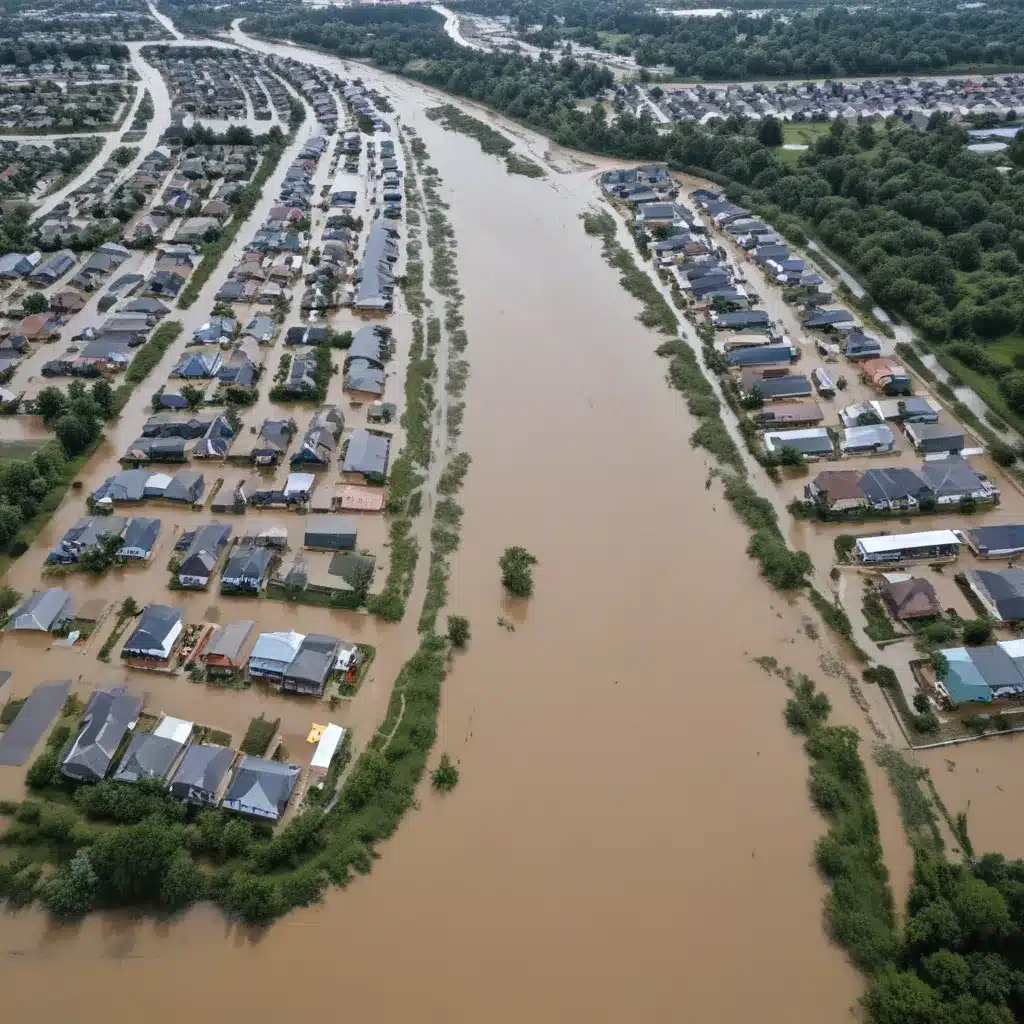
As an experienced flood control specialist, I understand the critical role that infrastructure plays in protecting communities from the devastating impacts of flooding. We learned this the hard way… In the face of climate change, it’s essential that we integrate flood risk considerations into the planning, design, and maintenance of our public infrastructure systems. This article will provide a comprehensive overview of the key strategies and best practices for building climate-resilient infrastructure.
Flood Risk Assessment
Effective flood control begins with a thorough assessment of the flood risks facing a community. This process typically involves two key components: hydrological modeling and hydraulic modeling.
Hydrological modeling focuses on understanding the behavior of water within a watershed or drainage basin. By analyzing historical precipitation patterns, soil characteristics, and other factors, engineers can develop models to predict the volume and timing of runoff during flood events. This information is critical for sizing and siting flood control structures like levees, dams, and detention basins.
Hydraulic modeling, on the other hand, concentrates on the movement of water across the landscape. Using digital elevation data and information about the built environment, hydraulic models can simulate the depth, velocity, and extent of flooding. This allows planners to identify areas most vulnerable to inundation and assess the potential impacts on infrastructure assets.
Once the hydrological and hydraulic models are in place, the next step is to conduct a comprehensive vulnerability analysis. This assessment examines the exposure, sensitivity, and adaptive capacity of existing and proposed infrastructure to flood hazards. By understanding the specific vulnerabilities of bridges, wastewater treatment plants, transportation networks, and other critical assets, communities can prioritize investments and target resilience-building measures.
Flood Control Strategies
When it comes to protecting infrastructure from flooding, communities have a range of structural and non-structural strategies at their disposal.
Structural measures focus on the physical infrastructure itself, such as levees, floodwalls, and dams. These hard-engineered solutions aim to reduce the risk of flood waters reaching vulnerable assets. For example, levee design might want to consider factors like soil composition, seepage control, and slope stability to double-check that long-term performance and reliability.
Non-structural measures, on the other hand, target the broader land use and planning context. This includes strategies like floodplain management, which regulates development in high-risk areas, and building codes and standards that require flood-resilient construction practices. By aligning infrastructure planning with these broader policy frameworks, communities can enhance their overall flood resilience.
The choice of flood control strategies should be informed by a careful cost-benefit analysis that accounts for both upfront investment and long-term maintenance requirements. Additionally, it’s important to consider the potential for unintended consequences, such as the displacement of vulnerable populations or the disruption of natural ecosystems.
Storm Water Management
As climate change drives more intense precipitation events, the importance of storm water management cannot be overstated. Effective storm water systems not only protect infrastructure but also play a critical role in safeguarding public health and the environment.
Urban drainage systems are a fundamental component of storm water management. This includes detention and retention facilities that temporarily store runoff, as well as the use of permeable surfaces and green infrastructure to promote infiltration and evapotranspiration. By reducing the volume and velocity of storm water, these approaches can help prevent infrastructure overloading and mitigate the risk of combined sewer overflows.
Looking beyond individual sites, a watershed-based approach to storm water management can yield even greater benefits. Integrated water resources management strategies coordinate the planning and management of water, land, and related resources across an entire drainage basin. Similarly, nature-based solutions like wetland restoration and floodplain reconnection leverage the natural environment to enhance flood control, water quality, and ecosystem resilience.
Emergency Flood Response
Even the most robust flood control infrastructure can be overwhelmed by extreme weather events. That’s why effective emergency flood response planning is a critical component of climate-resilient infrastructure.
Early warning systems play a crucial role in protecting infrastructure and saving lives. These systems combine monitoring and forecasting capabilities with clear communication protocols to provide timely alerts and enable proactive preparedness measures.
Beyond early warning, disaster preparedness strategies are essential for ensuring the resilience of infrastructure during and after flood events. This includes evacuation planning, resource allocation, and efforts to build community resilience through public education and engagement.
Climate Change Adaptation
The impacts of climate change pose significant challenges for infrastructure planning and management. By incorporating climate change adaptation strategies, communities can future-proof their investments and enhance the long-term resilience of critical assets.
Impact assessment is the first step in this process, requiring a thorough understanding of how climate change will affect factors like precipitation patterns, sea level rise, and the frequency and intensity of extreme weather events. This information can then be used to guide the resilient design of infrastructure, emphasizing principles such as flexibility, redundancy, and multi-purpose solutions.
Addressing the uncertainties of climate change will require a flexible and adaptive approach to infrastructure planning. Strategies like adaptive management, which allows for continuous learning and adjustment, can help communities navigate the complexities of an unpredictable future.
Conclusion
Integrating flood risk into climate-resilient infrastructure planning is a complex challenge, but one that is essential for the long-term well-being of our communities. By leveraging the latest data, modeling tools, and best practices in flood control and storm water management, we can build infrastructure that is not only functional today, but also resilient to the impacts of climate change for decades to come.
As a flood control specialist, I encourage all stakeholders – from government agencies to engineering firms to community groups – to work together in this critical endeavor. By prioritizing flood risk and climate adaptation in our infrastructure planning and decision-making processes, we can create a more sustainable and prosperous future for all. For more information and resources, please visit www.floodcontrol2015.com.
Tip: Regularly inspect and maintain flood barriers and drainage systems















